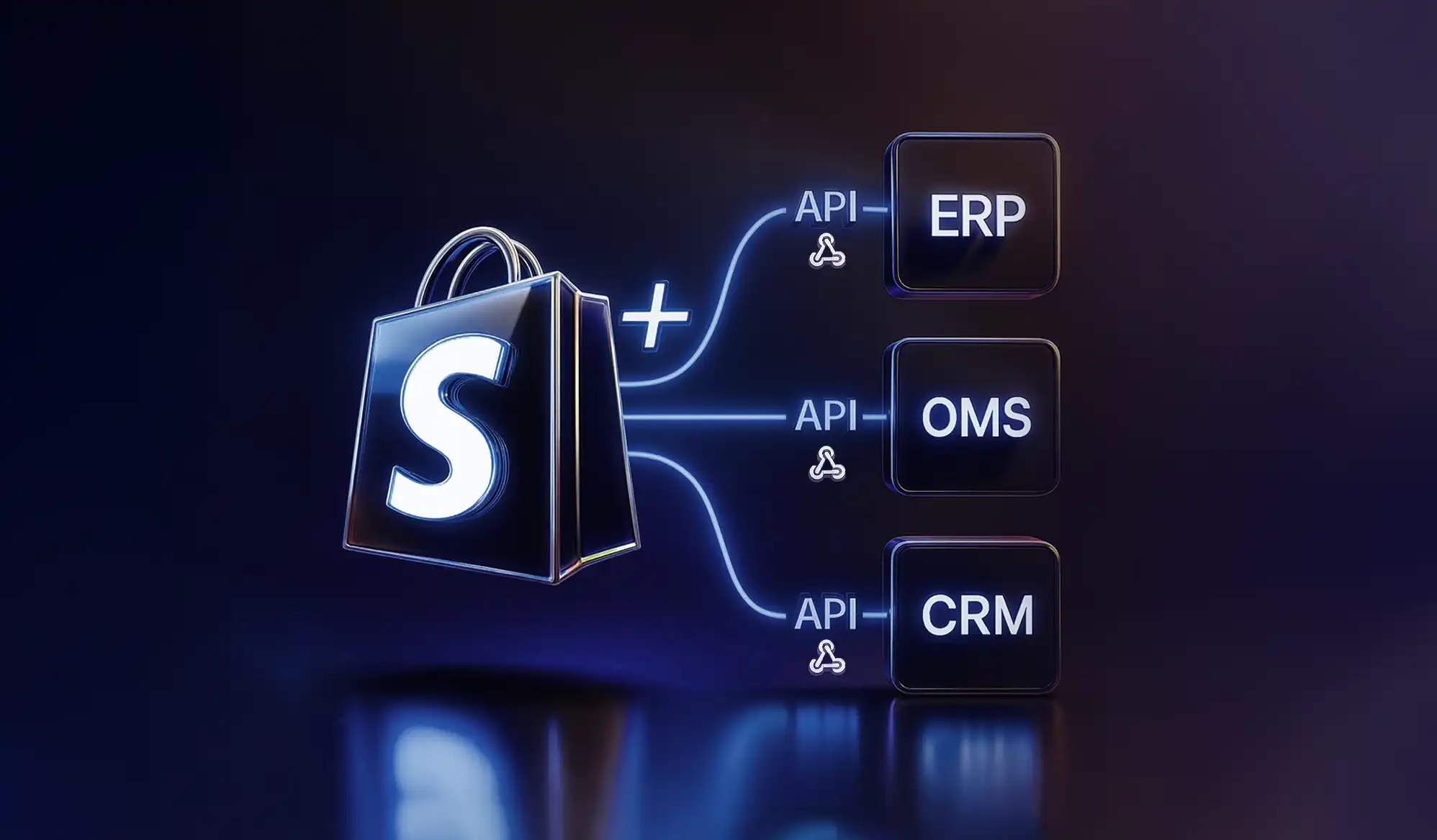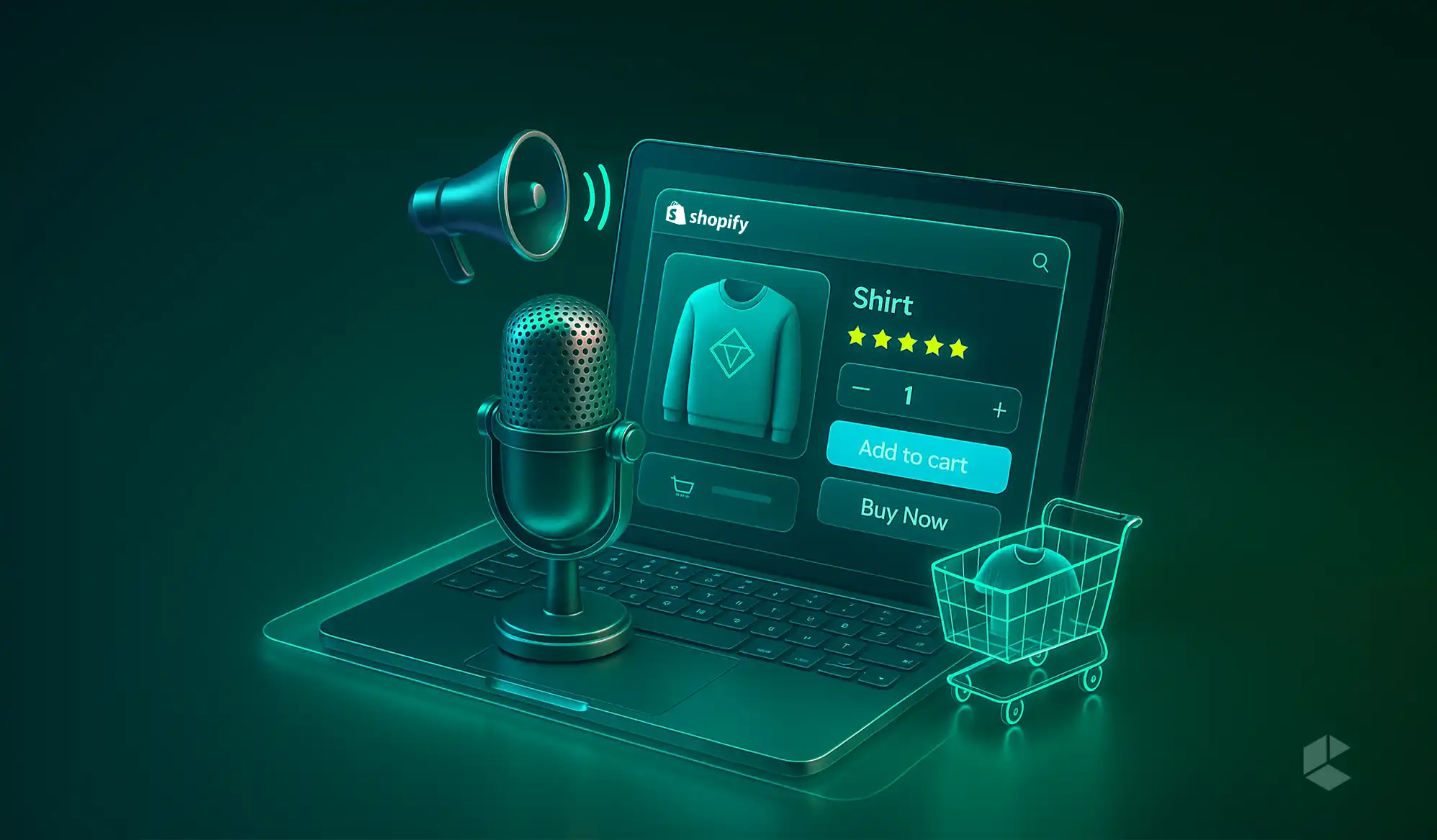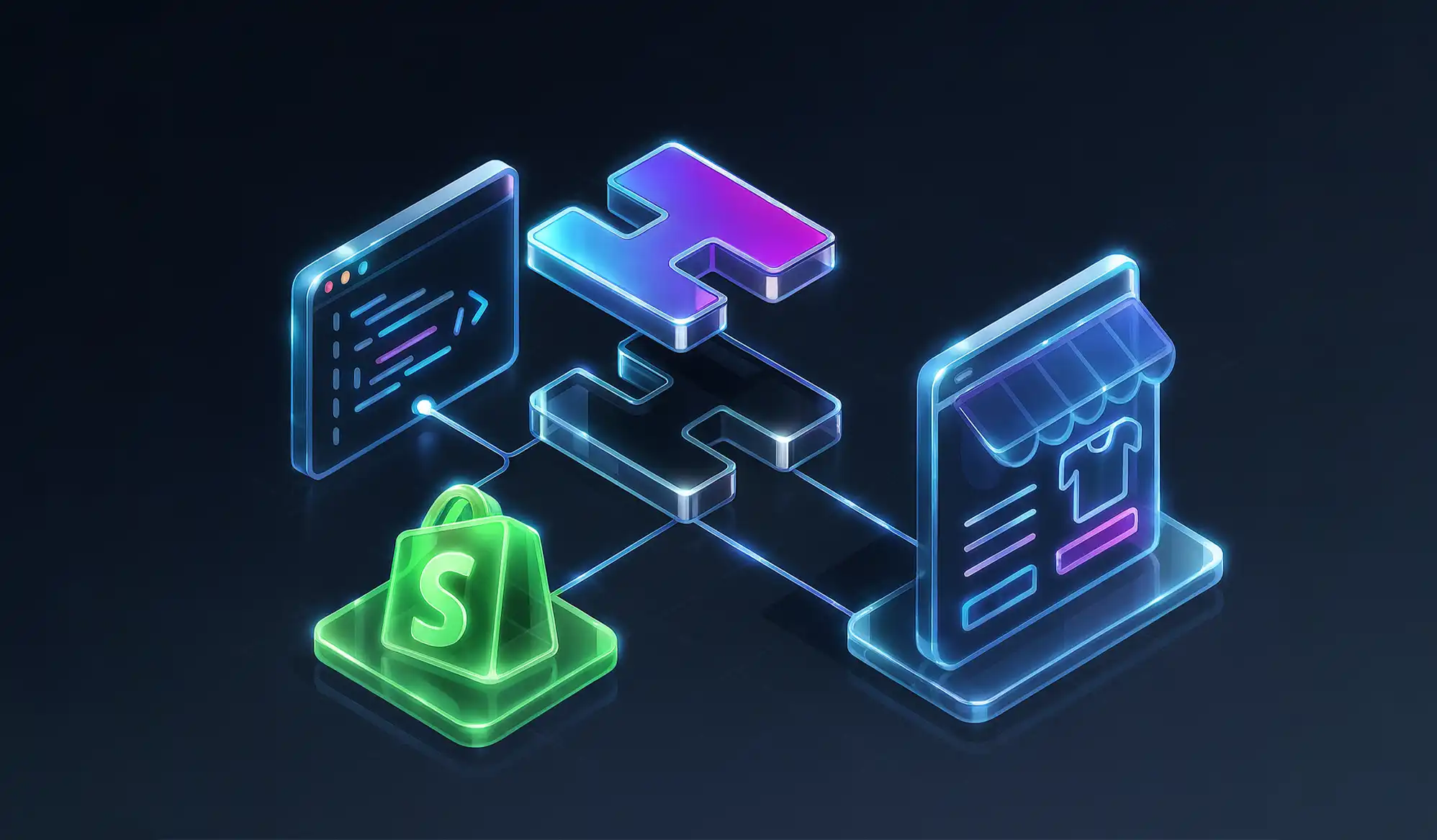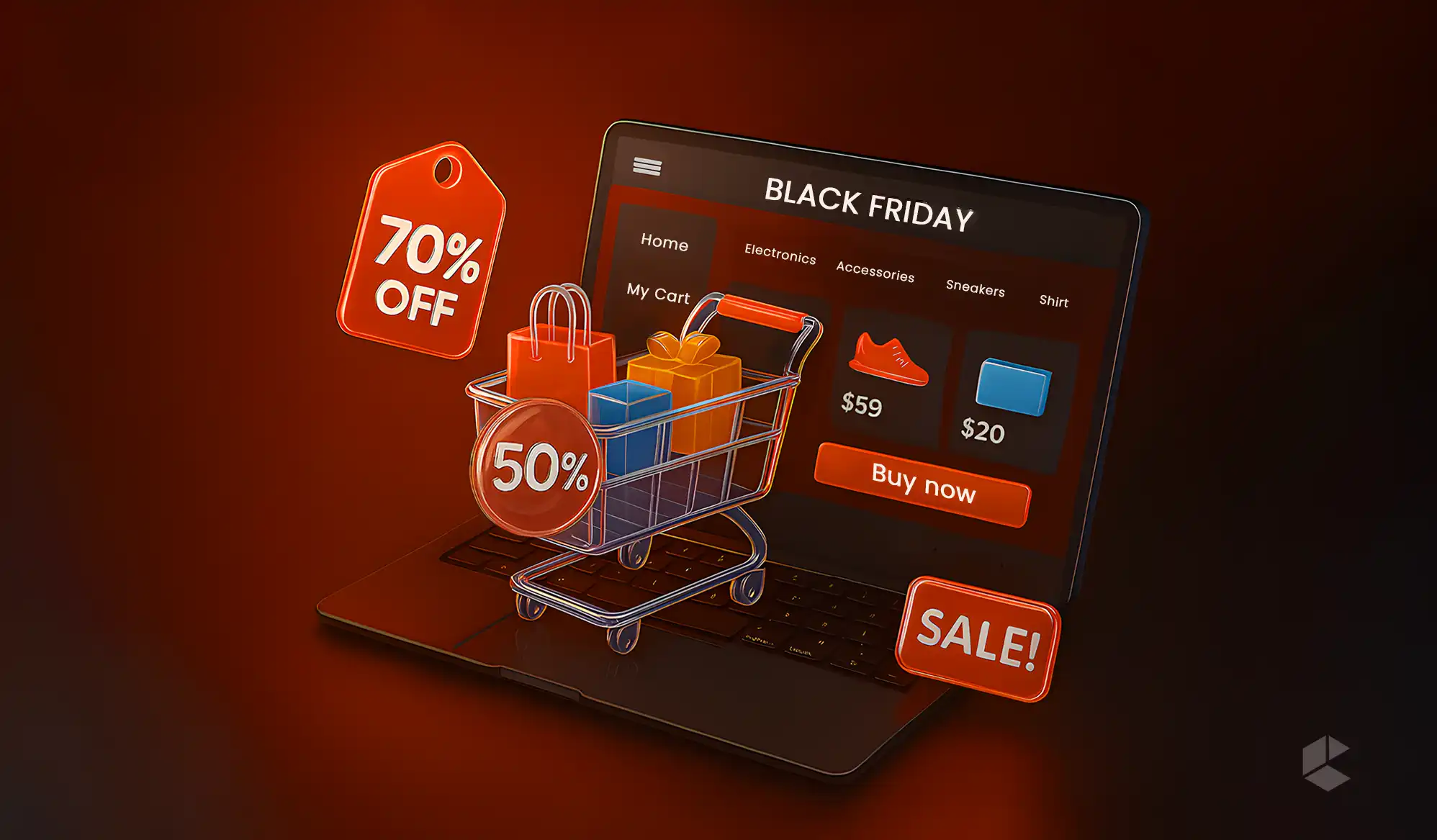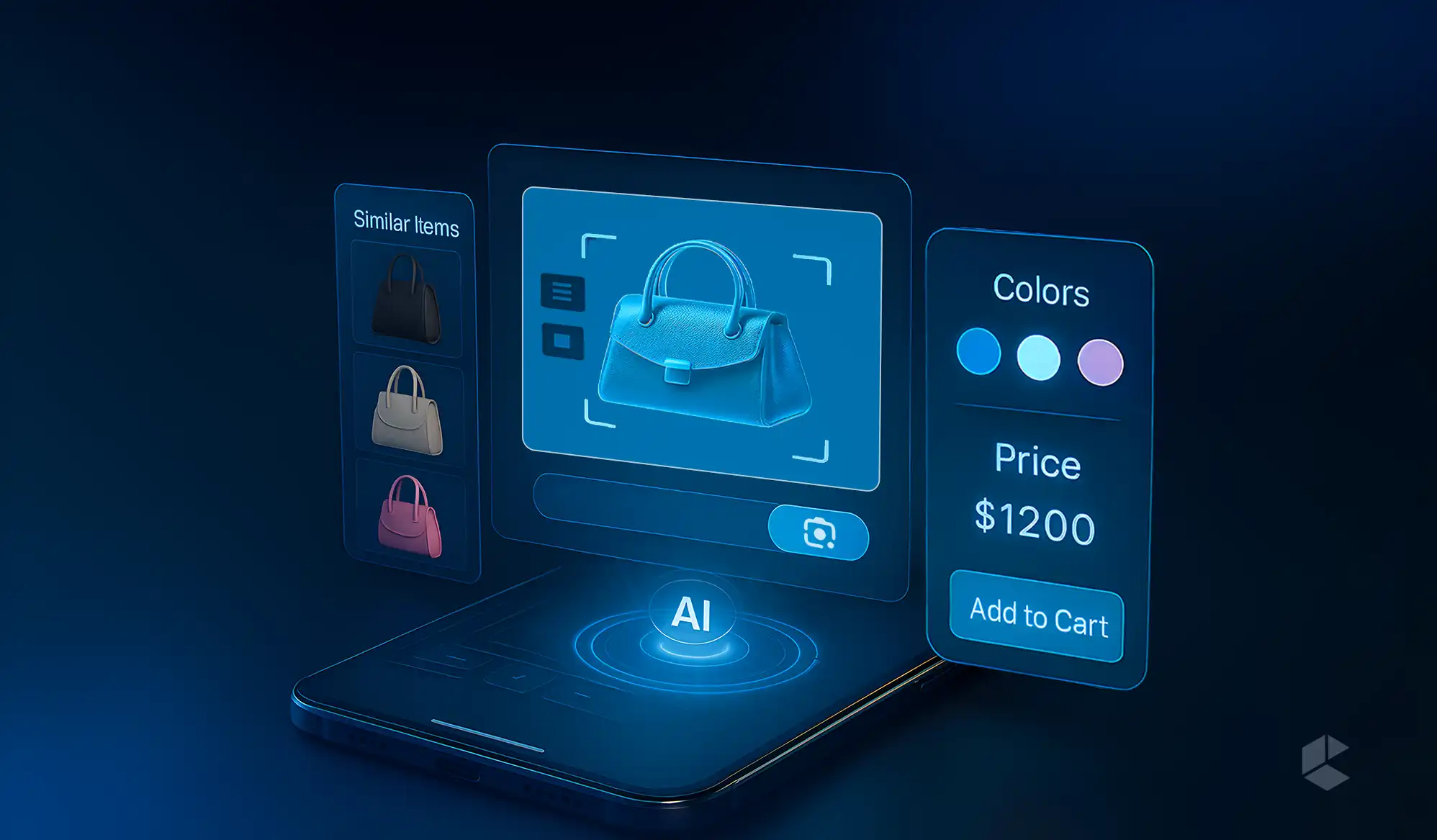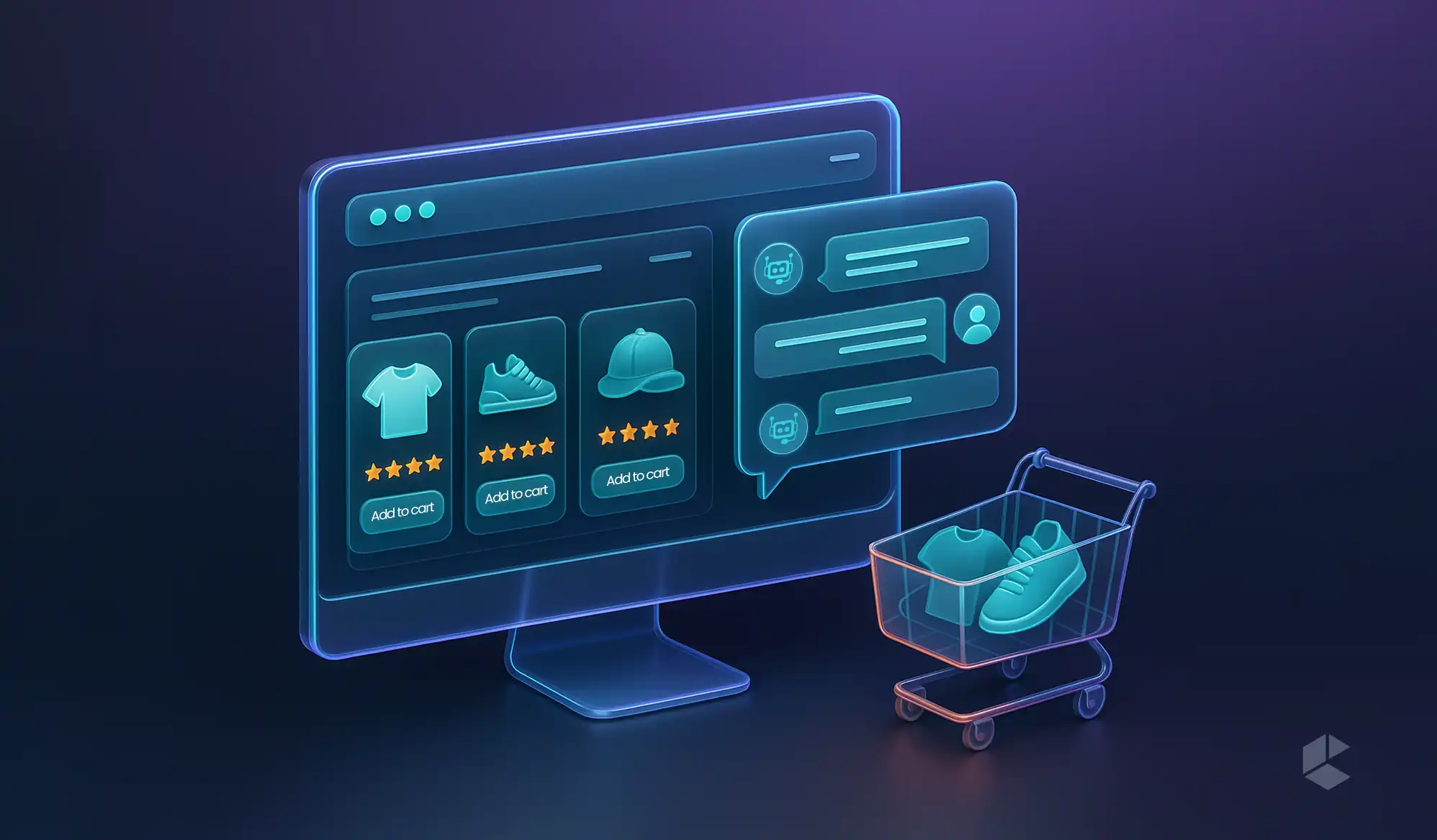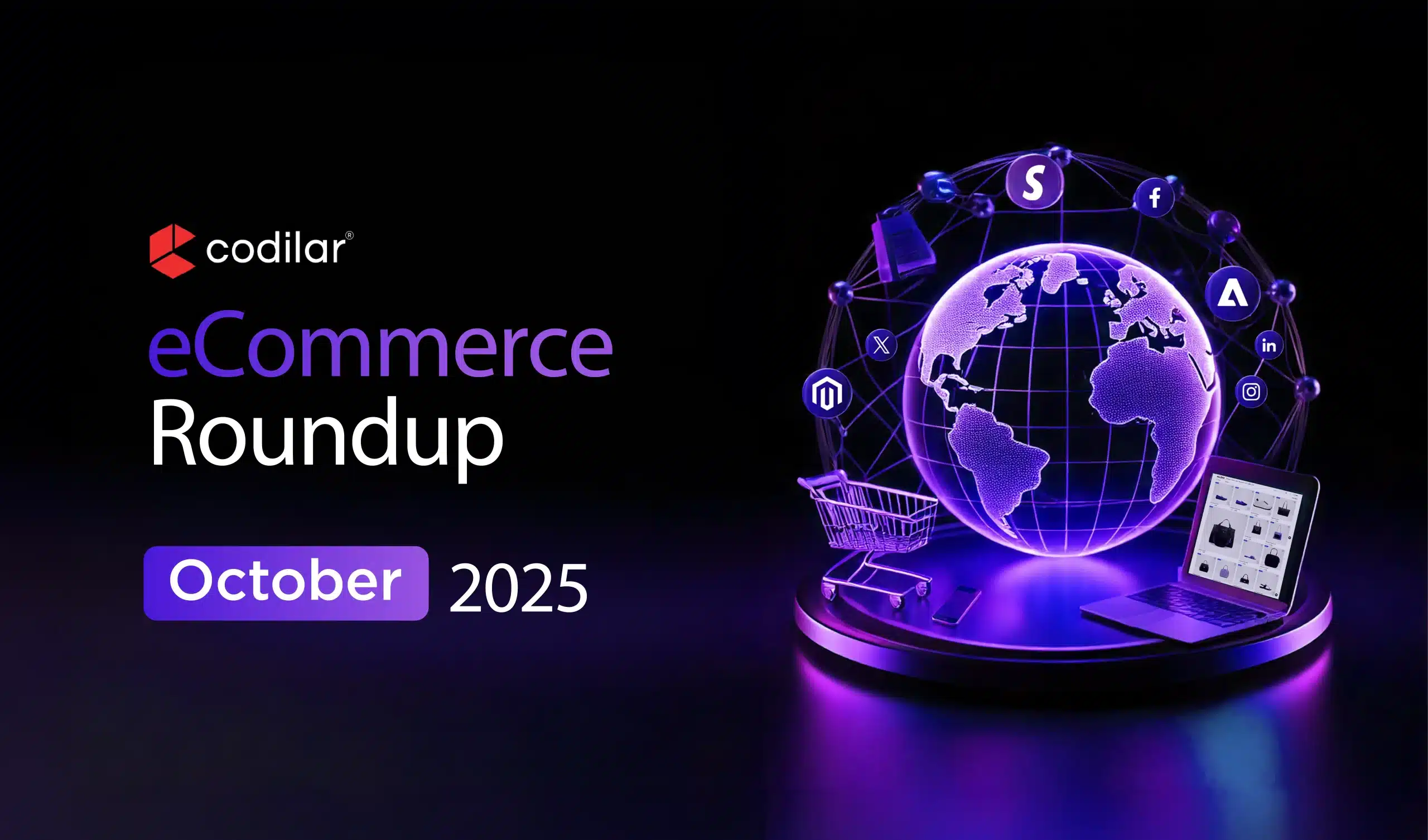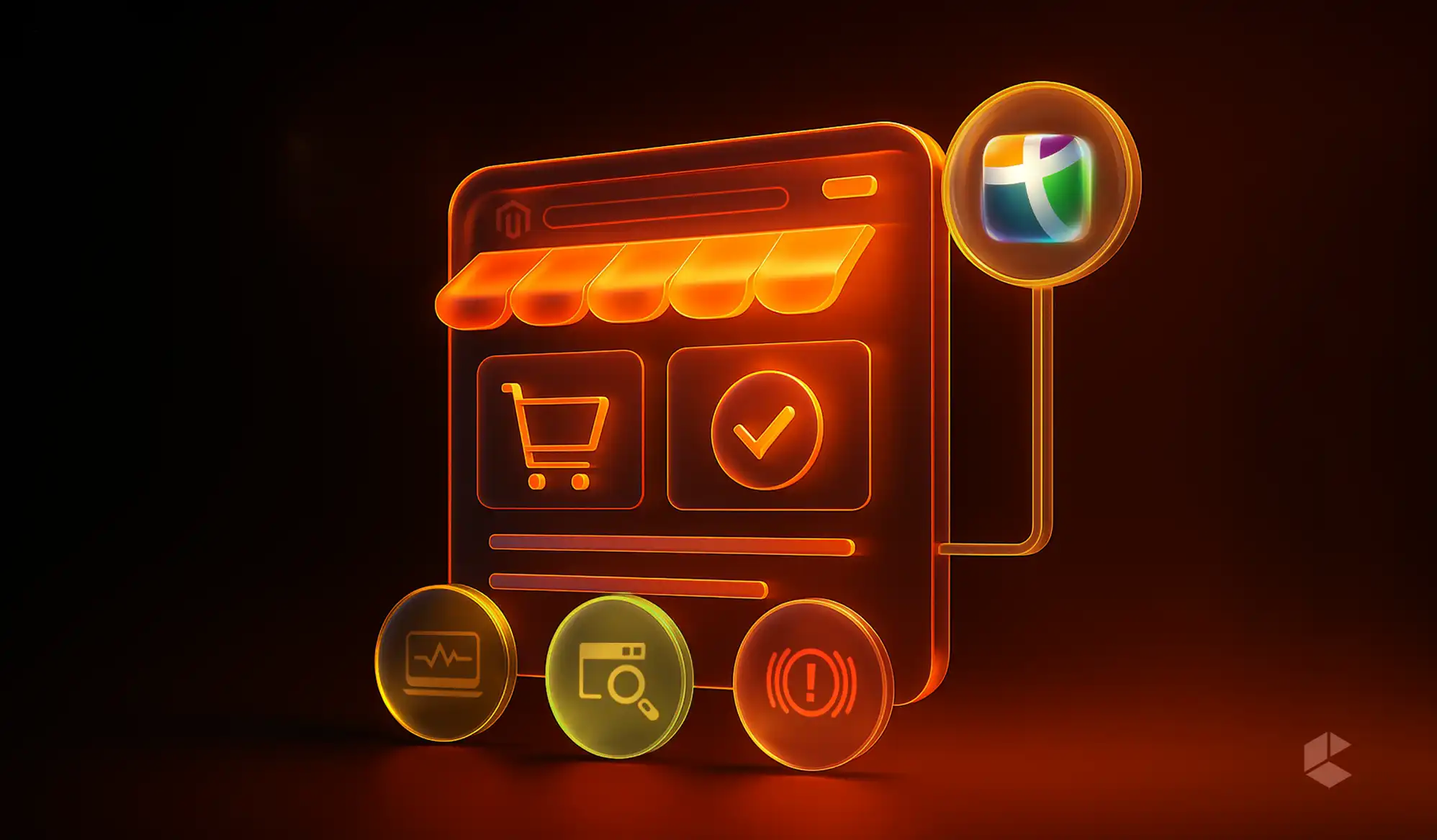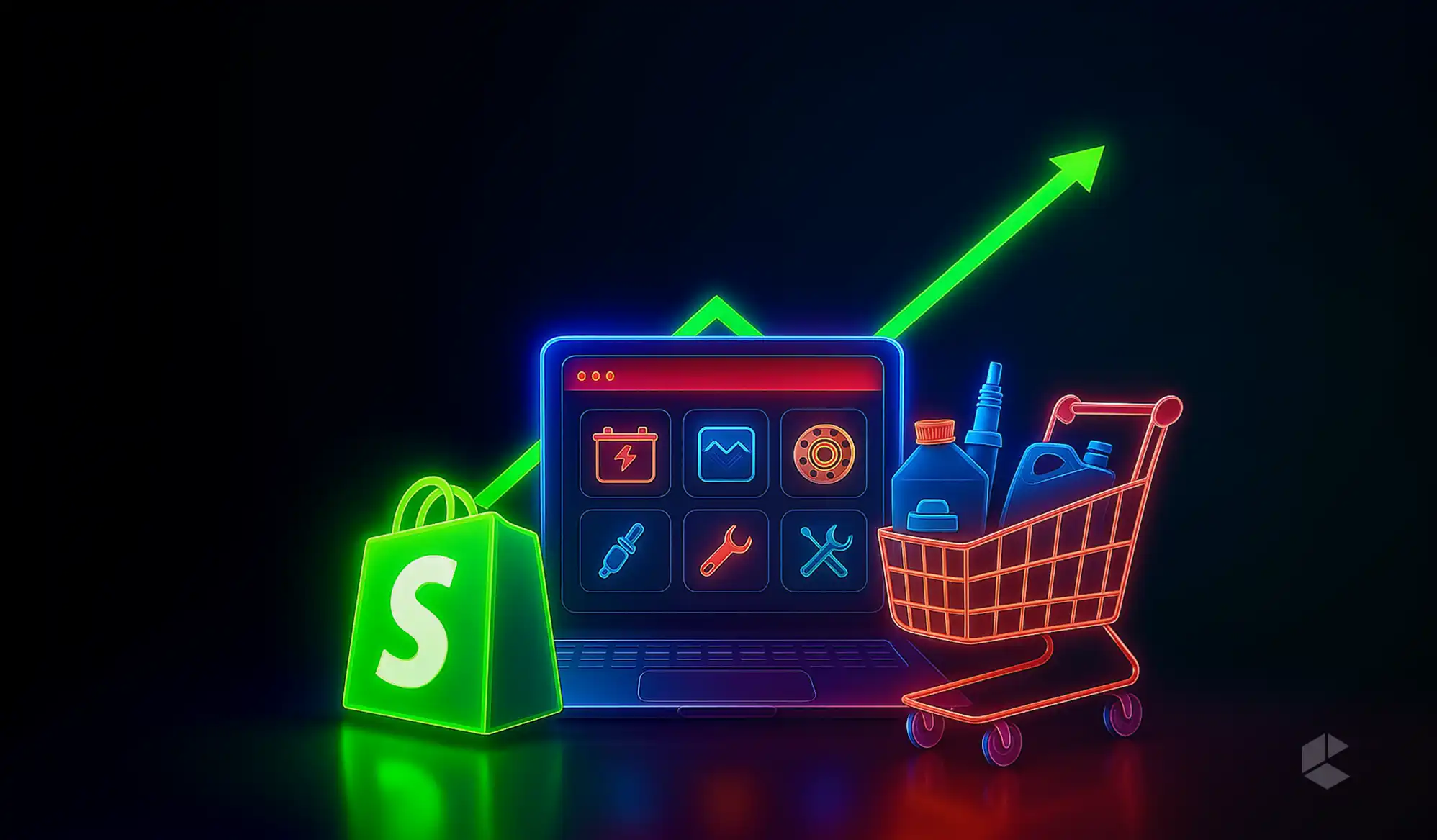- ERP, OMS, and CRM systems each play a critical role in running a scalable eCommerce operation. ERP unifies business processes, OMS manages order lifecycles, and CRM handles customer relationships.
- APIs and webhooks are the most efficient way to integrate Shopify Plus with these systems. They enable real time data sync, automation, flexibility, and scalability.
- Webhooks act as event triggers, alerting other systems when something happens in Shopify Plus, while APIs handle the actual exchange of detailed data between platforms.
- Using a middleware layer simplifies integration by managing API calls, transforming data formats, and keeping systems connected without direct dependencies.
- A proper integration strategy includes identifying necessary data flows, setting up webhooks, connecting via APIs, thorough testing, and ongoing monitoring.
- Real-time integrations reduce manual work, prevent errors, and improve customer experience, ultimately supporting faster growth and better decision-making.
Automation is what runs everything under the hood of a modern eCommerce business
After all, who likes to manually connect third party systems to Shopify Plus? Not me, not you, and definitely not anyone running a growing eCommerce business. Manual workflows are slow, error prone, and just not scalable.
That’s where API and webhook based integration comes in, helping Shopify Plus stores connect easily with systems like ERP, OMS, and CRM.
In this blog, you’ll learn about integrating Shopify Plus with ERP, OMS, and CRM systems using APIs and webhooks.
But first, let’s get familiar with the systems we’re integrating.
Understanding ERP
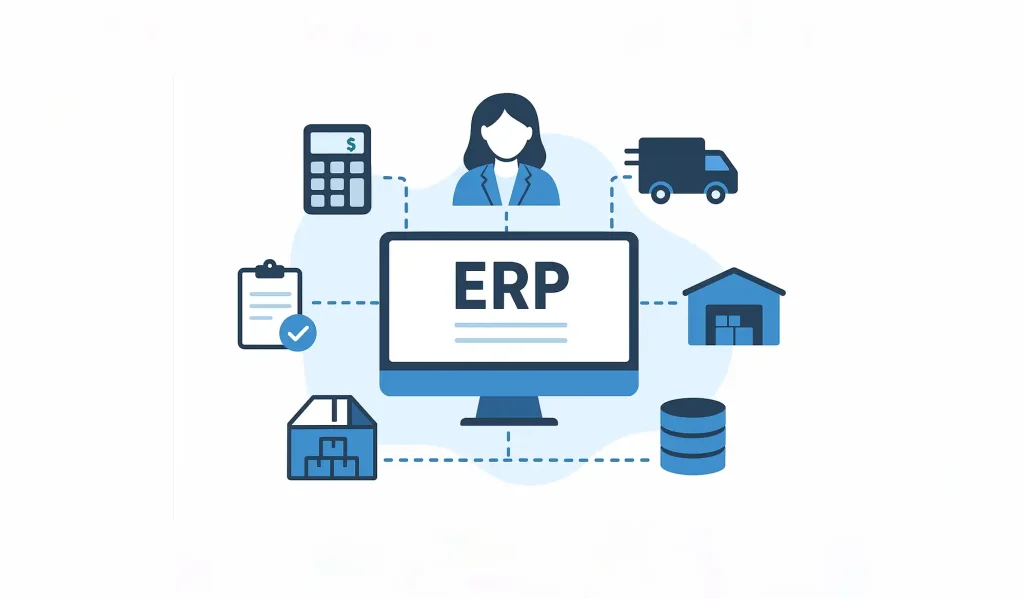
Enterprise resource planning is a software used by organizations to simplify their core business processes like finance, HR, manufacturing, supply chain, sales, and procurement. It is basically the thread that binds together the different computer systems for a large organization. Without an ERP system, each department typically uses its own separate software tailored to its tasks. With ERP, those systems are unified under a single application and interface, making everything accessible in one place. SAP, Oracle, Microsoft, Epicor, and IFS are some of the popular ERP systems.
What an ERP System Does for Your Business:
- Brings together departments like finance, HR, and logistics under one unified system
- Reduces duplicate data and eliminates disconnected software tools across the company
- Automates tasks such as invoicing, financial reporting, and payroll processing
- Supports warehouse, supplier, and logistics coordination for smoother fulfillment
- Improves team collaboration with shared dashboards and workflows
- Keeps stock levels accurate across systems and eliminates manual data entry
- Ensures that new orders on your store are reflected instantly in your backend
Understanding OMS
An Order Management System, also known as OMS, is a centralized platform that helps eCommerce businesses manage the entire journey of customer orders. This includes everything from placing an order to delivery and returns. Customers today buy from a variety of channels such as websites, mobile apps, and physical stores. An OMS brings all these channels together into one unified system, creating a consistent experience across the board. Popular OMS platforms that work well with Shopify Plus include Manhattan, Brightpearl, NetSuite, Skubana, and Orderhive.
What an OMS Does for Your Business:
- Automates key steps like capturing orders, validating them, checking inventory, processing payments, and managing returns
- Tracks inventory in real time to prevent stockouts and overstocking
- Routes each order to the most suitable fulfillment location
- Supports flexible options like home delivery, in-store pickup, and easy returns
- Provides full visibility into order status for both customers and employees
- Simplifies post purchase processes such as exchanges and refunds
Understanding CRM
Customer Relationship Management, or CRM, is software that helps businesses manage how they interact with customers from the first visit to ongoing repeat purchases. A CRM system stores important information and helps teams deliver consistent, personalized, and timely experiences. A good CRM allows you to track leads, monitor customer behavior, record conversations, and measure the effectiveness of your marketing and support efforts. Popular CRM tools include HubSpot, Salesforce, Zoho, and Klaviyo.
What a CRM System Does for Your Business:
- Stores detailed customer profiles, including order history, preferences, and behavior
- Helps you segment your audience for more targeted marketing campaigns
- Tracks every touchpoint from email clicks to support tickets and product views
- Supports personalized communication across email, SMS, and social channels
- Gives support teams the context they need to resolve issues quickly
- Enables automated workflows based on customer behavior, such as abandoned carts or repeat purchases
Why Use APIs and Webhooks for Integration?
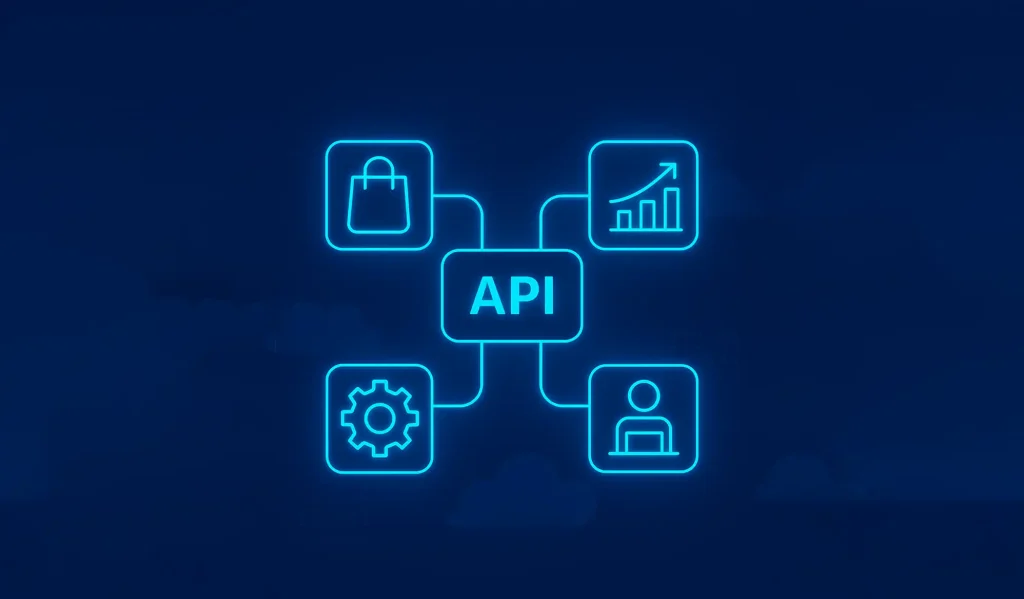
When connecting Shopify Plus with systems like ERP, OMS, and CRM, API and webhook based integration is the best method. Here’s why it stands out compared to other methods like CSV import/export or third party connectors:
- You get real-time data sync between systems, which means orders, inventory, and customer data are always up to date. With manual imports or scheduled syncs, you might face delays that lead to stockouts, double orders, or outdated customer information.
- Workflows are automated end to end, reducing the need for human intervention. If you’re relying on CSVs or entry level tools, someone still has to monitor and trigger those updates, which adds room for errors and slows things down.
- It’s more flexible and customizable, letting you build workflows tailored to your specific business logic. In contrast, third-party integration tools may lock you into predefined templates, and manual methods offer no flexibility at all.
- It scales with your business, whether you’re handling 100 or 10,000 orders a day. Manual processes can’t keep up with high volume, and third-party tools often come with limits or rising costs as your usage grows.
- You have full control over the integration logic and data handling, allowing for better security and compliance. Relying on external platforms or manual processes can expose your business to data handling risks and compliance gaps.
How to Integrate Shopify Plus with ERP, OMS, and CRM Systems Using APIs and Webhooks
The actual integration process involves a few key steps. While every business has unique requirements, the general approach looks like this:
1. Identify the Data to Sync
Decide which data needs to move between Shopify Plus and your ERP, OMS, or CRM:
- ERP: Orders, invoices, product details, and inventory levels
- OMS: Orders, returns, shipping updates, and stock availability
- CRM: Customer profiles, purchase history, and marketing engagement
This step ensures you’re not moving unnecessary data, which keeps the integration clean and efficient.
2. Set Up Webhooks in Shopify Plus
Create webhooks for events that should trigger actions in other systems. Examples:
- Order creation → Notify ERP and OMS for processing and fulfillment
- Inventory update → Send stock changes to ERP
- Customer creation → Add customer details to CRM
Webhooks instantly “push” data to your endpoints whenever these events happen.
3. Use APIs for Data Exchange
APIs are what actually move detailed data between Shopify Plus and your ERP, OMS, or CRM after a webhook has triggered an event. Each platform has its own API that lets you pull or push information.
For example, you might use:
- Shopify’s REST or GraphQL Admin API → To fetch full order details, update product inventory, or modify customer records.
- ERP APIs (e.g., SAP, Oracle NetSuite) → To send Shopify order data into your ERP or pull inventory numbers back into Shopify.
- CRM APIs (e.g., Salesforce, HubSpot) → To push Shopify customer activity into your CRM for personalized campaigns.
In short, Webhooks tell you something happened; APIs let you go get the details or update other systems accordingly.
4. Build an Integration Layer (Middleware)
Instead of connecting Shopify Plus directly to each system, many businesses use a middleware layer, either custom-built or based on tools like MuleSoft or AWS Lambda.
This middleware:
- Receives webhook events
- Calls APIs of the target systems
- Handles transformations so each system understands the data format
5. Test and Validate
- Run tests in a sandbox environment
- Simulate real scenarios like order creation, cancellation, returns, and stock updates
- Ensure error handling and logging are in place
6. Monitor and Maintain
Once live:
- Track webhook deliveries and API responses
- Adjust integration logic as business needs evolve
- Keep API credentials and security tokens up to date
In short:
- Webhooks → Event triggers for real-time sync
- APIs → Detailed data exchange and updates
- Middleware → Glue that keeps everything connected smoothly
Conclusion
Integrating Shopify Plus with your ERP, OMS, and CRM through APIs and webhooks is a business growth strategy. When your systems talk to each other in real time, you cut out manual bottlenecks, reduce costly errors, and free your team to focus on what really matters, which is serving customers and scaling the business. Instead of juggling spreadsheets or relying on slow, rigid tools, you’ll have a flexible, automated backbone that adapts to your workflows and keeps every department in sync. The sooner you make the move, the sooner you can start running a business that’s as connected as the world you sell to.
FAQs
Integration allows all your business systems to share data in real time. This eliminates manual data entry, reduces errors, improves order accuracy, and gives you a complete view of your business operations, from inventory to customer relationships.
APIs and webhooks provide real-time, automated, and flexible connections between systems. Other methods like manual uploads often cause delays, require more human intervention, and increase the risk of data mismatches.
Yes. While APIs and webhooks require technical setup, many integration platforms and Shopify apps offer no code or low code solutions. However, for complex workflows or custom business logic, working with a developer is recommended.
The timeline depends on complexity. A simple integration using pre-built connectors can take a few days, while a fully customized, multi-system setup may take several weeks. Proper planning and testing are key to avoiding downtime.
No, if implemented correctly. In fact, real-time integrations can make operations faster by automating tasks behind the scenes, reducing delays in order processing, and ensuring customers get accurate information about inventory and delivery timelines.
